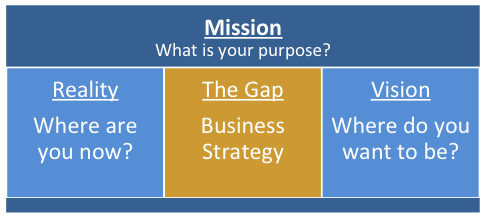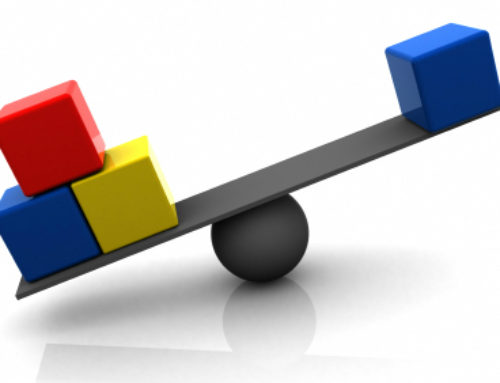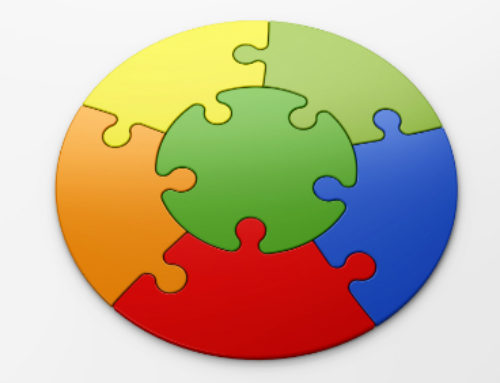The phrase ‘Business Strategy’ can sound both impressive and important but it also often sounds vague and detached.
Business Strategy Defined
There is a lot of jargon that surrounds business strategy but put simply:
A Business Strategy is the overall, long-term plan of an organisation to fulfil it’s purpose.
A business strategy is not the same as a business plan. A business strategy is based on a longer timescale and may incorporate multiple business plans. For example, a cleaning company may have a one year business plan for it’s domestic business and another one year plan for it’s commercial business whilst it’s 5 year business strategy would incorporate both.
Business Strategy as ‘The Gap’

Business strategy deals with the big questions.
- What is your purpose? (Your Mission)
- Where are you now? (Your Reality)
- Where do you want to be? (Your Vision)
- How are you going to get there? (Your Strategy)
Mission, Vision and Business Strategy
Mission and vision are often used interchangeably but they have different meanings.
- The ‘Mission‘ of a business is the overall purpose or reason that it exists. This purpose is sometimes communicated in a ‘Mission Statement’.
- The ‘Vision’ of a business is the future state that the business wants to achieve so that it can fulfil it’s ‘Mission’.
- The ‘Business Strategy’ is how the organisation is going to achieve it’s ‘Vision’ and so fulfil it’s ‘Mission’.
Where do you want to be? (Your Vision)
To be useful the vision has to be defined in detail using goals and objectives.
- Goals are general statements of aim or purpose.
- Objectives are specific outcomes that are usually measurable.
Where are you now? (Your Reality)
The external factors currently impacting the business have to be identified.
- How is the industry that the business belongs to?
- Where is the business in the market compared to it’s competitors?
- What are the opportunities and threats?
- What levels of uncertainty and risk are there?
The internal factors currently impacting the business also have to be identified.
- What are the competences of the business?
- What are the strengths and weaknesses?
- What resources does it have?
- What capabilities does it have?
- What does the financial position look like?
- How does it’s cost structure and performance compare when benchmarked against other businesses?
Developing a business strategy (The Gap)
The business strategy is developed as each area of the business develops strategies to address ‘the gap’.
- Marketing strategy
- People strategy
- Information strategy
- Finance strategy
- Technology strategy
- Supply chain strategy
- Organisational strategy – structure and culture
- Growth strategy – organic, acquisition, mergers
- Competitive strategy, etc
Summary
A business strategy is the overall, long-term plan of an organisation to fulfil it’s purpose. It aims to bridge the gap between where a business is now and where that business wants to be. It is the plumb-line against which all other business activity should be evaluated. By developing an effective business strategy you are moving your business towards it’s vision and therefore setting your business free.
© Business Set Free Ltd 2013
This is just one of many articles that you can find at BusinessSetFree.com or click to subscribe to our free e-newsletter.
Links to business strategy tools
Marketing Mix – helps define the strategy for marketing.
SWOT Analysis – identifies the internal strengths and weaknesses of the business as well as the external opportunities and threats in it’s environment.
Porter’s 5 Forces – helps to identify how a business can take advantage of the profitability of an industry.
Porter’s Generic Strategies – helps define the competitive advantage that the business can pursue.






